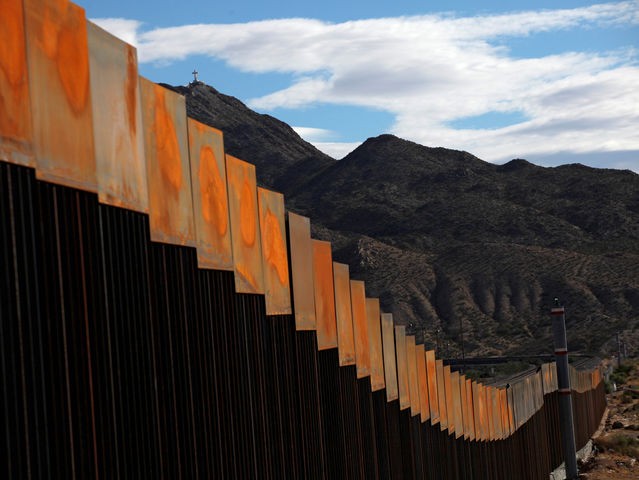President Trump has reportedly floated the idea of lining the proposed wall at the southern border with solar panels to pay for the project. The idea may seem outlandish, but Republicans have hailed it as “innovative,” while experts and designers have been pitching something similar for months.
According to Axios, Trump floated an idea to Republican lawmakers of the wall being coated with solar panels and the electricity generated helping to pay for the project. While sources told Axios he was not presenting it as a definite solution, he reportedly said he envisioned a 40-50 foot wall covered with panels to make them “beautiful structures.”
Such a design for the wall may be able to swing Republicans concerned about the costs of the project and perhaps even some Democrats — who have always had a soft spot for green federal projects.
“I think it’s innovative,” House Majority Leader Kevin McCarthy (R-CA) told the Wall Street Journal. “To authorize it and to appropriate it wouldn’t cost as much.”
“He’s been looking at a lot of options and this is a new option that he’s been looking at that sounds like it’s got real promise,” House Majority Whip Steve Scalise (R-LA) told the Journal.
While the idea may seem far-fetched, it has, in fact, been considered for months.
A Las Vegas contractor spoke to NBC’s local affiliate in April about his plan to cover the wall in solar panels — and he even submitted a formal proposal to the federal government.
Thomas Gleason of Gleason Partners LLC told the affiliate that a wall covered in panels would both pay for itself and look “pretty darn nice.” He also noted that it would have the additional benefit of being almost impossible for illegal immigrants to climb.
“There’s no place to grab. There are no holes. There’s no gap more than three millimeters,” he said.
Other submissions to the government have included turning it into a tourist attraction or using the wall to store nuclear waste, but the Associated Press reported that Gleason’s proposal included the idea that sales of electricity could cover the cost of construction in 20 years or less, and power could also be sold to Mexico.
Even left-wing outlets have noted the possibility of at least some form of a solar border. In December, Homero Aridjis, a poet and environmentalist, and Prof. James Ramey, a member of Mexico’s National System of Researchers, called on Mexico to build a “border of solar panels” in an op-ed for HuffPo:
With solar plants along vast stretches of the almost 2,000-mile U.S.-Mexico border on the Mexican side, a new high-voltage direct-current (HVDC) grid could be set up to transmit energy efficiently from that long, snaking array to population centers along the border. HVDC power lines lose exponentially less energy over long distances than traditional power lines. Cities that could immediately benefit include San Diego, Tijuana, Mexicali, Tucson, Phoenix, El Paso, Ciudad Juarez, San Antonio and Monterrey.
While Aridjis and Ramey do not envision a border wall per se, they believe that setting up solar panels at the border would act as a “de facto virtual fence,” both deterring illegal immigrants and drug trafficking into the U.S. while creating an economic stimulus for Mexico — giving would-be migrants jobs without having to cross the border:
A solar border would alleviate a range of binational problems. For one, it would have a civilizing effect in a dangerous area. Since solar plants use security measures to keep intruders out, the solar border would serve as a de facto virtual fence, reducing porousness of the border while producing major economic, environmental and security benefits on both sides. It would make trafficking drugs, arms and people all the more difficult for criminal cartels. In Mexico, the solar border would create a New Deal-like source of high-tech construction and technology jobs all along the border, which could absorb a significant number of would-be migrant workers on their way to cross into the U.S. illegally, at great physical risk.
In addition, the authors write, it would help reduce carbon emissions and provide other environmental benefits.
It seems, therefore, that Trump’s wall has the potential to be both bipartisan and binational.
However, Sen. Chuck Schumer (D-NY) shot down the plan in the Senate.
“The president is still pushing this medieval proposal, now with an absurd twist,” he said, comparing it to painting a pony with stripes and calling it a zebra.
Adam Shaw is a politics reporter for Breitbart News based in New York. Follow Adam on Twitter: @AdamShawNY.

COMMENTS
Please let us know if you're having issues with commenting.